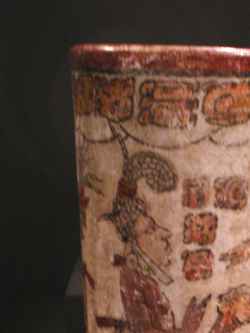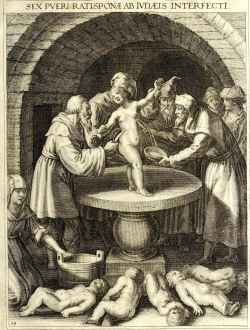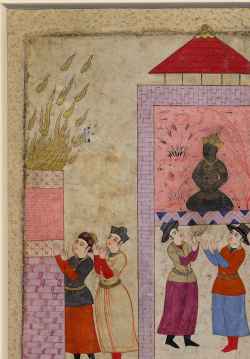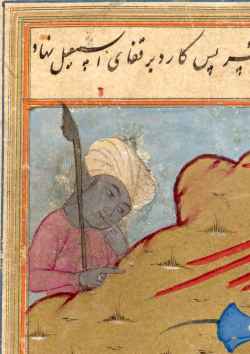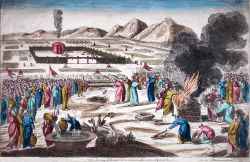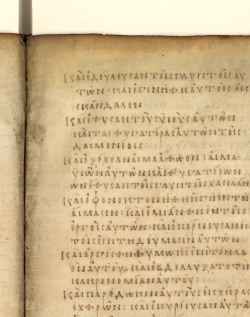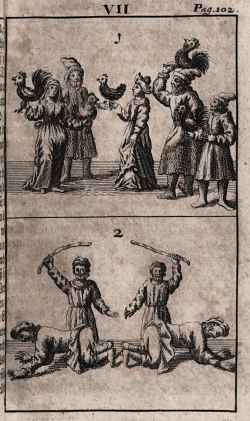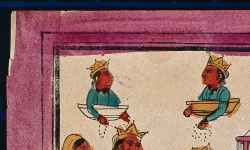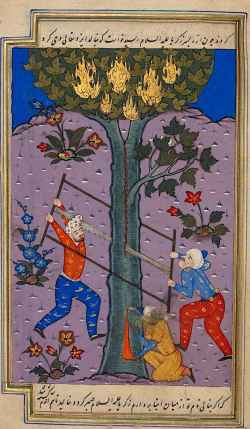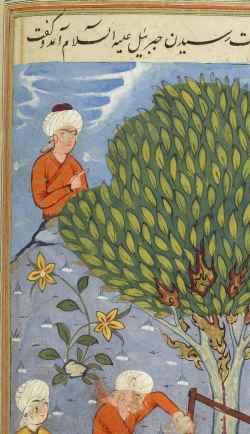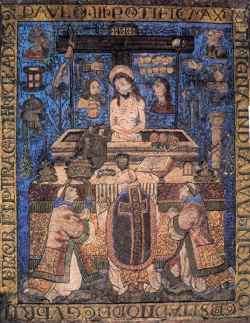Topic: 2. Sacrifice and religion: Comparisons, Antiquarians, Anthropology (16th-18th Century)
Religious sacrifices across various cultures and contexts sparked widespread interest in Early Modern Europe. As Christianity expanded into regions inhabited by "infidels" and "pagans", Europeans encountered a diverse array of sacrificial customs, ranging from the Sati rituals in India to the Aztec sacrifices in the Americas. This cross-cultural exposure captivated a wide audience, including theologians, philosophers, political thinkers, antiquarians, orientalists, missionaries, poets, artists, and even the general public. These encounters broadened the European understanding of sacrifice and led to a critical reassessment of classical and biblical sacrificial rites. This section includes:
- Sources: A selection of early modern printed materials, which include descriptions of the Americas, Asia, and Africa, alongside antiquarian and philological studies on religious sacrifice in classical antiquity and beyond. It also presents early modern works of ethnological observations and the first attempts to compare different sacrificial practices in various traditions and contexts, laying the groundwork for disciplines like the history of religions and anthropology.
- Iconographic Representations: A rich collection of images from the 16th to 18th centuries, illustrating a range of sacrificial rituals and practices as seen in different cultural and geographical contexts.
- Related Bibliography: An extensive bibliography spanning scholarly works from the 19th to 21st centuries, providing contemporary analyses and interpretations of these early studies and observations.
Ceremonial knife (tumi) with figural finial (1470–1532)
from: South America, Peru, Central highlands
Cylinder vase with prisoner and sacrificial scene (Maya)
San Francisco, Fine Arts Museums
Deities and Demons Performing the Yajna Sacrifice from the Devi Mahatmya (18th)
from: India, Rajput
Princeton University Art Museum
Fictitious illustration of a medieval ritual murder accusation (1627)
from: Matthäus Rader, Bavaria Sancta Band III, 1627, p. 173
Handprints of women who committed sati
Wall of the Junagarh Fort (Bikaner, Rajasthan, India)
Hanuman and the monkeys assault the demons, forcing Indrajita to break off the sacrifice that would make him invincible (1597-1605)
from: The Ramayana (Tales of Rama; The Freer Ramayana), Volume 2
National Museum of Asian Art, Smithsonian Institution, Washington D.C.
Ibrâhîm [Abraham] holding a knife is about to sacrifice his son Ismâ'îl (Ishmael) who kneels before him (1580)
from: Qisas al-Anbiyâ [Qazvin?]
The New York Public Library, Spencer Coll. Persian MS. 46
Jewish sacrificing children to demons (IXth Century)
from: Psalterium, Constantinople / Istanbul
Paris, BnF, Grec. 20, fol. 18
Kapparot. Yom Kippur, the day before (1705)
from: from: Friedrich Albrecht Christiani, Der Juden Glaube und Aberblaub, Leipzig 1705, p. 102
Killing of the Passover Lamb, putting blood on the lintel and the door-posts (1335-1340)
from: Rylands Sephardi Haggadah, Passover Haggadah (Catalonia, Spain)
Manchester, The John Rylands Library, Hebrew MS 6, fol. 19v
Martyrdom of the prophet Zakarīyā (Zechariah) (XVI)
from: Nīšāpūrī, Isḥāq Ibn-Ibrāhīm: Qiṣaṣ al-anbiyāʾ
Staatsbibliothek zu Berlin, Diez A fol. 3
Martyrdom of Zakariya (XVI)
from: ishâq nishâbûrî, qisas-i qur'ân. [Qazvin, Iran]
Paris, BnF, Persan 54, fol. 144v
Musei Borgiani Velitris. Tab I. Pictura exhibens sacrificium solis. Tav. II Pictura Indica autographa exhibens holocaustum ignis (1791)
from: Paulinus a S. Bartholomaeo, Systema Brahmanicum liturgicum, mythologicum, civile, Rome 1791
New York Public Library


